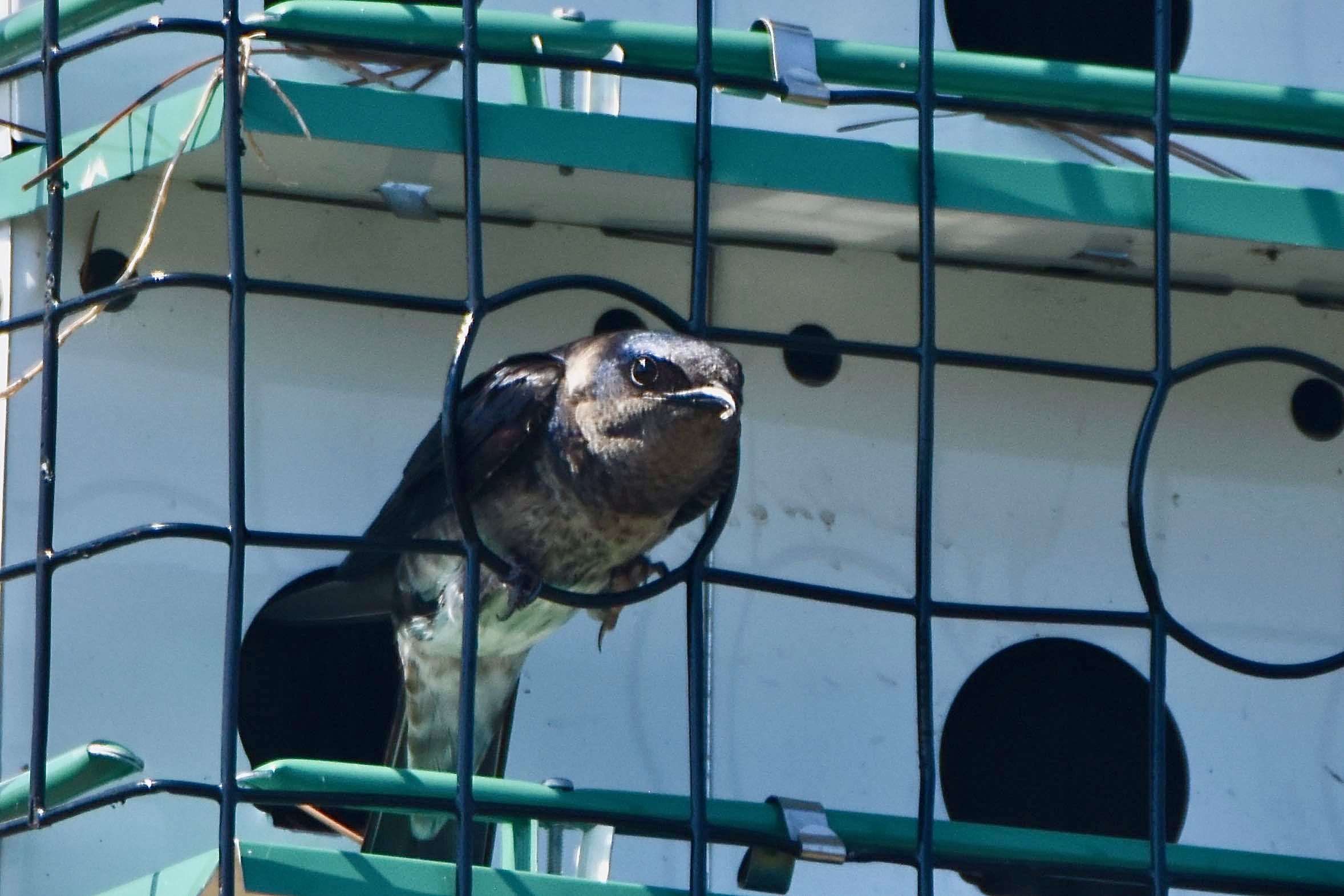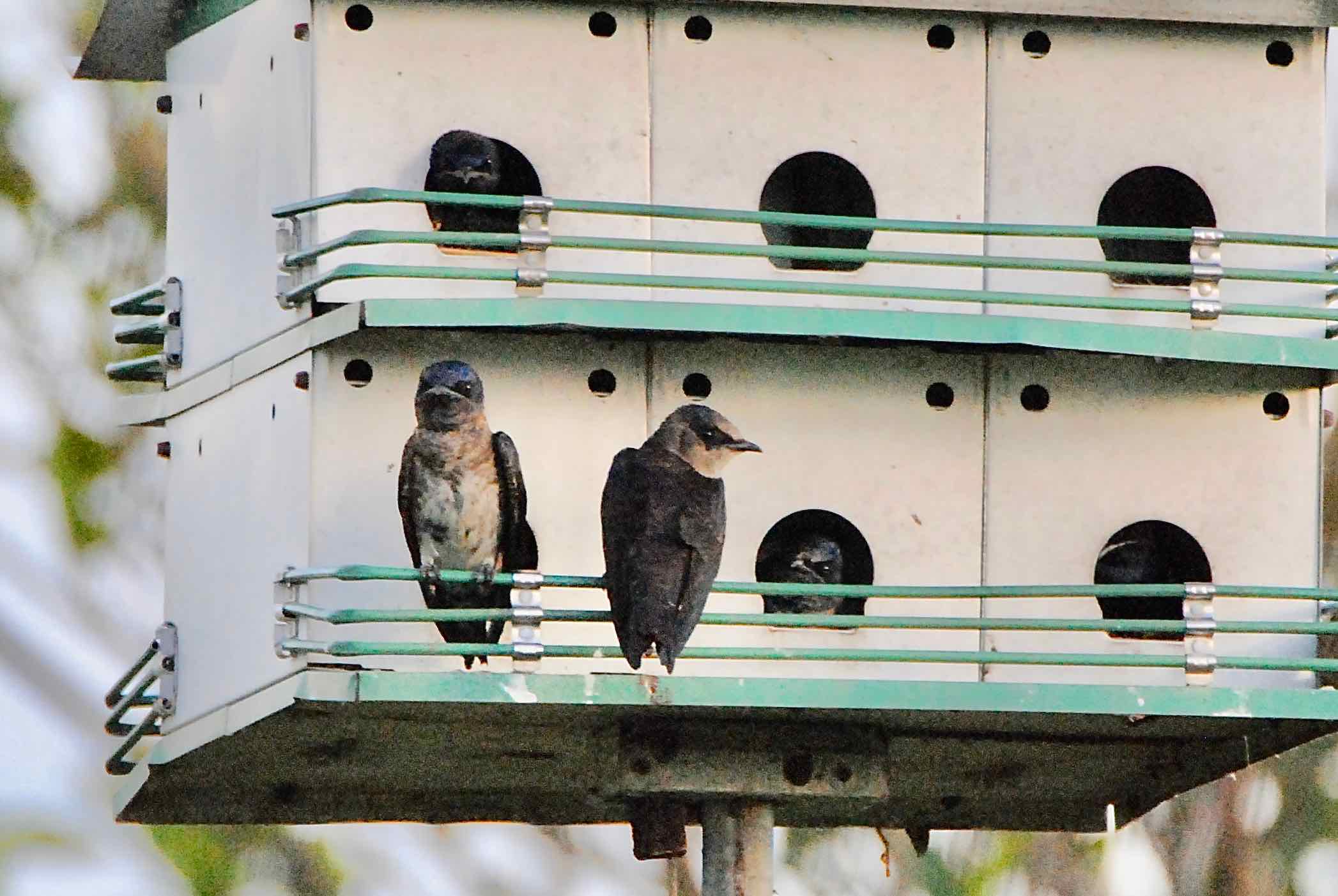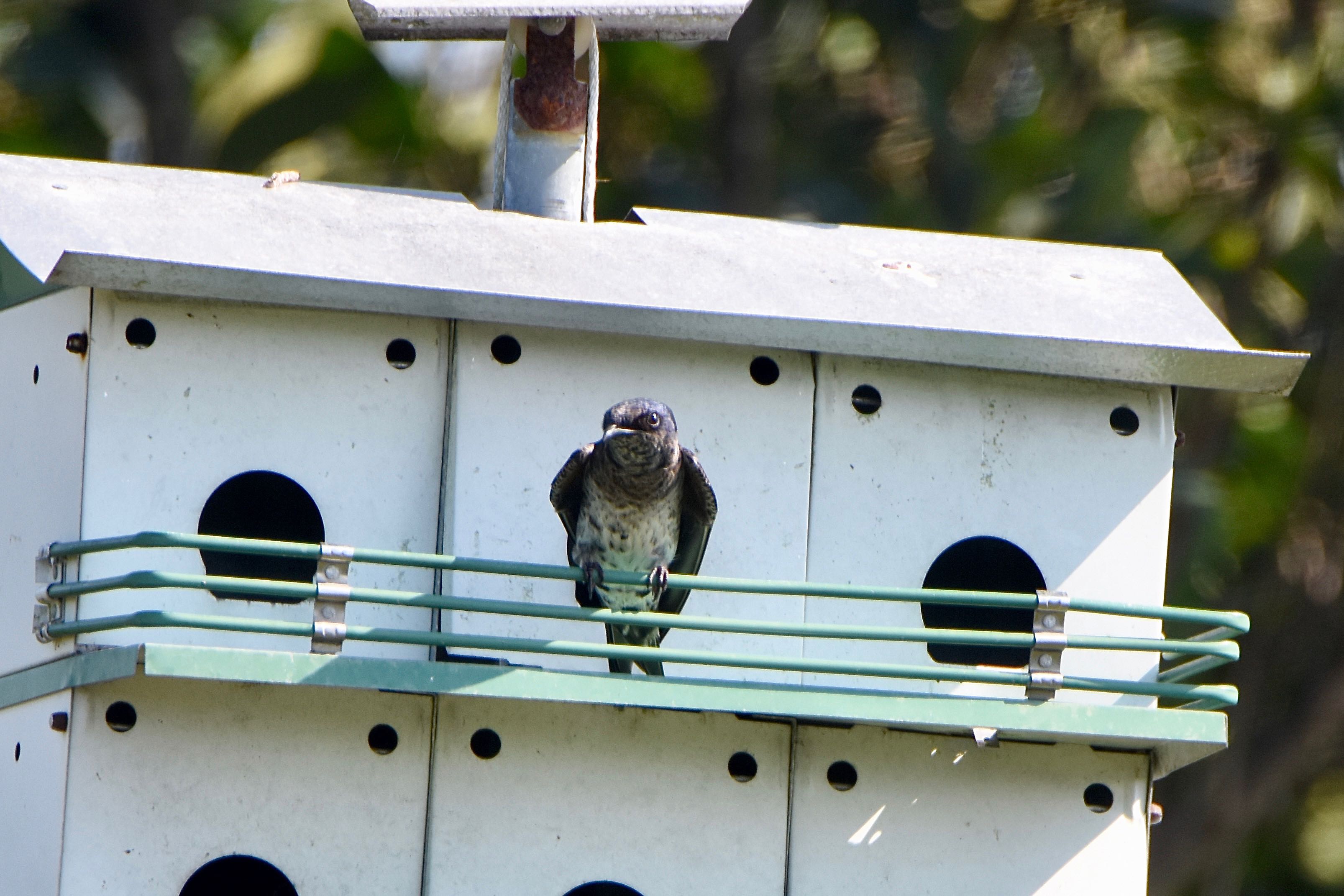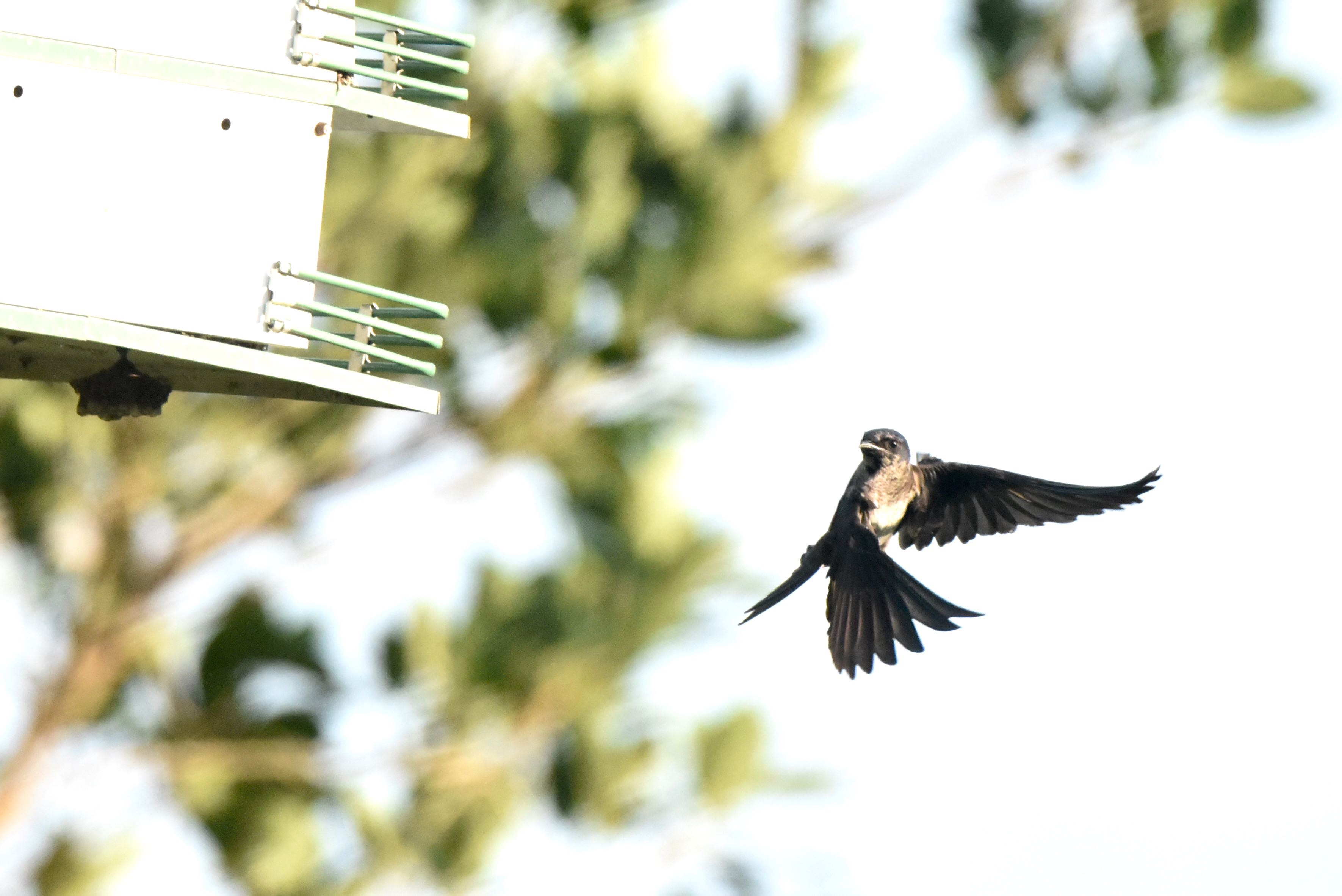
Purple martin, photographed at Wakodahatchee Wetlands, Delray Beach, Palm Beach County, in April 2018.
You could almost classify the purple martin, Progne subis, as semi-domesticated for it's near-reliance on man-made housing.
Purple martins are migratory birds, making semi-annual treks between North and South America. They breed in the spring and summer of North America, then head as far south as Brazil and Argentina to avoid winter's chill.
The thing is, when they hit North America, at least the eastern half of the continent, they'll nest almost exclusively in nest boxes like the ones shown on these pages or in other man-made structures. Out west, however, they're more likely to find a woodpecker hole, a cliff ledge or a cavity in a saquaro cactus to nest. The human habit of housing purple martins extends back to Native Americans, who would hang hollowed gourds to attract the birds.
Purple martins feed almost exclusively on flying bugs, beetles, dragonflies, crickets, grasshoppers, bees, wasps, flies and the like. The line about purple martins eating as many as 2,000 mosquitos a day is more myth than fact, according to the Audubon Society. Still, its bug-heavy diet, bright songs and acrobatic flying skills — it hunts on the fly — make it a favorite with us humans. It also drinks on the fly, dropping low to scoop up some water.
Purple martins are distinguished in another way. They are the largest of North America's swallows, with a body length of about eight inches, and a wingspan of 15. Adult males are dark, with iridescent blues and purples in their heads and bodies, their wings blacks and dark browns.
Females are less irridescent, and what little they have is limited to their heads. Their chests and bellies are grayish white, with dark markings. Purple martins have long, tapered wings and a notched tail typical of swallows. Their bill is stout, with a slight hook.
As noted, they come here to breed, their range extending over most of the U.S. east of the Rockies and into Canada. They're also found in the Pacific Northwest and the Southwest into Mexico and Central America. There are three subspecies of purple martins, all geographically distinct — eastern, northwestern, southwestern. Purple martins are colonial nesters but they are territorial as well, although the individual "turfs" might only be a couple of compartments within a box. They'll also cede territory, gradually, avoiding fights unless their nest compartment is entered. They generally pair up, but one male might have two females within his territory. Habitat for these birds is semi-open land near water.
Both house sparrows and European starlings are competitors for nesting sites. Males select the nesting sites: females select their mates based on the sites the dudes claim. Both sexes build the nest; one of the few times purple martins might be seen on the ground is while they gather nesting material. Females will lay clutches of three to six eggs, which take 15 to 18 days to hatch. Both parents split the job of feeding their offspring, which will require about four weeks, give or take, to fledge.
Purple martins are members of Hirundinidae, the swallow family.
Wakodahatchee Wetlands



